The zucchini is one of the most well-known summer squash varieties. It is easy to grow and can produce from the last frost of the year to the first frost, given the right growing environment and care.
This guide will show you everything you need to know to plant, grow, and harvest your zucchini, along with pro tips to keep your plants healthy and producing maximally!
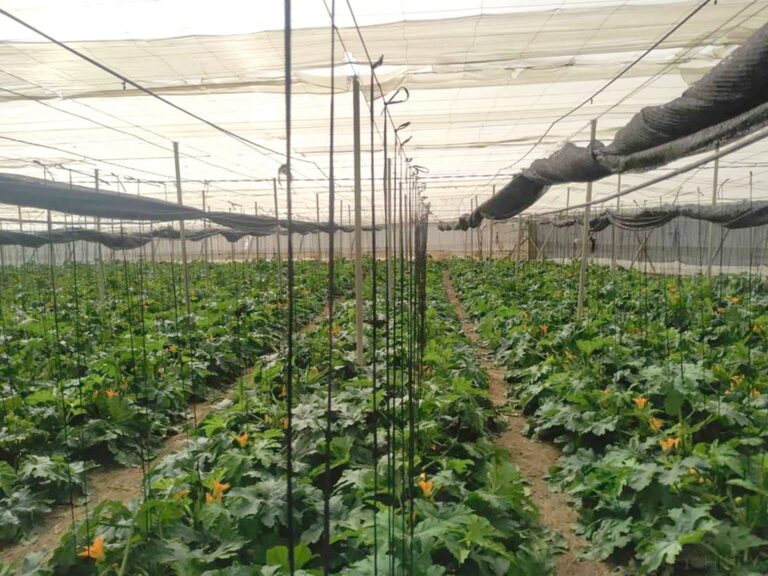
What Is A Zucchini?
Zucchini has other common names, depending on the region. They are also known as courgettes and marrows or baby marrows.
While the zucchini is treated as a vegetable, it is technically a fruit. Because of it’s more savory flavor, it is lumped with vegetables along with other non-sweet fruits like tomatoes.
One thing to note about growing is zucchini is that they need pollinators to produce fruit. If you don’t have a garden buzzing with bees, you are going to have a hard time producing a lot of squash.
Luckily, the zucchini plant produces amazing yellow-orange flowers that draw bees in naturally:
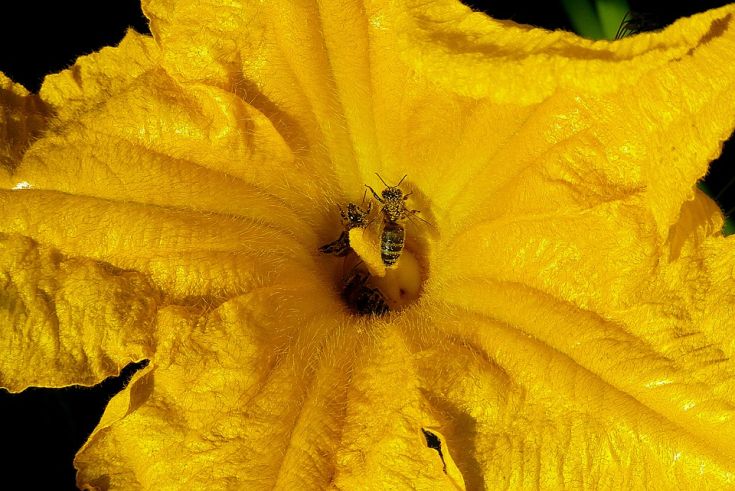
The zucchini plant is one of the easiest garden plants to grow and can thrive in a variety of conditions. Many people overplant squash plants and end up harvesting more than they can even eat or preserve.
Luckily, they can be fed to livestock, like chickens and pigs, on the homestead and cut your feed bills as well!
Zucchinis are typically green but, depending on the variety, can be light green, dark green, or even yellow. They typically grow straight and can get relatively large.
Most gardeners pick their squash when they are small as it helps the plant produce more fruit and the Zucchini itself is more tender.
Zucchini Growing Conditions
The zucchini plant isn’t picky. Just like any other plant, it can thrive and produce a huge harvest, or it can struggle through the growing season and produce less fruit. Here are the main factors that affect the bounty:
- ☑ Sun exposure
- ☑ Temperatures
- ☑ Irrigation
- ☑ Soil Quality
- ☑ Fertilization
- ☑ Pollination
If you can optimize all of these factors, you can maximize your zucchini yield.
Zucchini plants do best will full sun exposure of at least 6-8 hours per day. The more sun they get, the better they will grow. The shade will just slow them down.
As for temperature, zucchini seeds will sprout when the soil temperate reaches 65-70 degrees Fahrenheit (18 to 21 Celsius). Essentially, they can be sprouted after the last frost of the season. They are quick to sprout and can be put in the ground to grow until the next frost!
Zucchini plants love water. However, too much water on the vegetation will increase the risk of diseases. That’s why it’s imperative to water at the soil level when the top inch of the soil dries out.
They prefer a lot of water to maximize their zucchini production and too little water will likely cause blossom end rot, which will ruin the individual squash.
The soil quality needs to be relatively rich to maximize production, but they can grow in any soil. The more organic matter, like compost, that is in the soil, the more the plant will thrive.
A neutral pH is perfect. You can simply mix a couple of inches of compost into the planting area to provide optimal soil texture and quality.
Through the season, you may need to fertilize your zucchini plants to continue the high yield that zucchini can produce. They simply need a balanced fertilizer regularly. You can make compost tea, or use a high-quality organic fertilizer according to its directions.
Last but not least, pollination will make or break your harvest. The squash plant itself will do its job and produce enticing flowers that are large enough to bring in bees around the area.
You can also increase your pollination productivity by spacing your plants properly, pruning excess vegetation, and planting pollinator-friendly plants around your garden.
Here are the most popular zucchini varieties that you can plant in your garden:
- Black Beauty (my go-to)
- Dunja
- Cocozella
- Golden Zucchini
There are also a bunch of hybrids that can have different shapes, sizes, textures, and flavors. Each nursery or seed bank typically has unique varieties to choose from so you can try and bunch and save seeds from your favorite.
Starting Zucchini From Seed
While some garden plants are tough to start from seed, zucchini is not one of them. They sprout quickly as long as the temperature and moisture are optimal.
As mentioned before, when the soil temperature reaches around 65-70 degrees (18 to 21 Celsius), the zucchini seeds are ready to plant. You can either direct seed or plant in a small container and transplant the seedling later.
Since squash plants have no problem transplanting, I prefer to plant them in small containers and transplant them out when they are established and healthy.
It only takes a week or two, depending on the climate and light exposure, to go from putting the seed in the soil to being ready to transplant to the garden.
Plant each seed roughly a half-inch deep and cover with soil. I typically put two seeds per container and grow the plants in pairs and prune to reduce crossover while increasing the pollination probability. Keep moist until the plant has sprouted and then water regularly.
One thing I like to do is use soil that is already in my garden to start my seeds. That way, when I transplant the seedlings to their garden beds, they are already accustomed to the soil that they will grow into.
Transplanting Zucchini Plants
When your seedlings look healthy and have developed actual leaves, they are ready to transplant to the garden. You don’t want to wait too long, and risk the seedling getting root-bound in the container, which can limit growth potential.
To transplant your zucchini seedlings, prepare your garden bed by making a hole roughly the size of the container with the seedling. If you use flexible containers, the process of removing the seedling from the container is easy:
- Put your hand on top of the container with the plant in between your fingers.
- Turn the container upside down.
- Lightly squeeze the container as you rotate it. This will loosen the soil from the sides and allow the plant and soil to slide out together.
- Place in the garden bed and mound soil around the transplant.
- Water to soak the roots and ensure the container soil bonds with the garden soil.
If you want to make the process easier, you can use containers that are designed to plant directly into the garden bed. These can reduce the risk of transplant shock, but I’ve never had this problem with squash plants.
To take it even further, you can plant seeds in trays or flats with pressed soil and transfer the soil block to the garden without a need for a container at all.
No matter how you start your seeds, the transplanting process is typically the same.
When spacing your plants, ensure you leave enough room for maximal growth. Each plant should be spaced about 2-3 feet (60 – 90 cm) apart. This may seem far, but they will grow that large if you treat them properly.
By the end of the season, they will probably all grow together, which is why pruning is so important throughout the season.
Growing Zucchini In Containers
Zucchini doesn’t have to be transplanted into a garden bed. It can grow in a container for its whole life. Pick a container that is large enough to support a squash plant. The larger the container, the larger your plant will grow.
This can help reduce the risk for disease and pests since it is self-contained and can be kept away from places that harbor pests and disease. When in doubt, the container can be moved to mitigate all current risks.
Make sure you pick a well-draining potting soil, and choose a container that has drainage holes. You can grow zucchini on a sunny porch, your deck, or even a balcony!
Try and stick with bushing varieties instead of vining. Vining zucchini varieties have a much large root ball and need more space than most containers can hold. Instead, picking a bushing variety will be perfect for a 5-gallon container that is about 6 inches wide and deep.
The container shouldn’t be porous, at this dries the container out too quickly. Ceramic is a great choice for growing zucchini in a container.
Sun, watering, and fertilizer need all stay the same when gardening in containers. Pick a sunny location, water when the top inch of soil is dry, and fertilize when necessary based on the factors discussed below.
Fertilizing Zucchini
Fertilizer needs depend on your soil quality. Rich soil may not require fertilizer for a couple of months while poor soil would do well with fertilizer right away.
If your plants start to yellow or your fruits start to slow in production, it may be time to fertilize.
A high-quality organic fertilizer can be made with compost materials. Making compost tea is simple and effective for zucchini plants. Simply soak the material for 2-3 days in a bucket of water, strain out the solids, and water the plants with the tea.
One of my favorite things to do in the spring is to make grass clipping tea, since the grass and weeds grow rapidly. Take a bag or two of clippings from your lawnmower, and soak them in water for 3 days.
You can cover it and make it anaerobic or leave it open and keep it aerobic. Add water as it evaporates. In 3 days, strain out the grass clippings and use this high-quality tea on your squash plants. This alone can provide enough nutrients to help the plants thrive.
Pruning Zucchini
Many gardeners don’t prune their squash plants. However, if you want your plant to keep producing fruit until the next frost, it is necessary. Otherwise, too much green vegetation will grow, and the plant will only focus its efforts on that.
Instead, pruning off excess vegetation that does nothing for the crop production will help the plant shift focus to more squash production and increase your yields.
Any leaves that don’t directly shade the blossoms should be pruned. Any leaves that are already shaded by a larger leaf should be pruned. Any leaves that show signs of disease or discoloration should be pruned. Any overlapping leaves should be removed as well.
Essentially, you are only keeping enough vegetation to shade your blossoms and growing squash.
Doing this regularly will keep your zucchini plants under control and allow more fruit to grow. We aren’t growing these plants for leaf production!
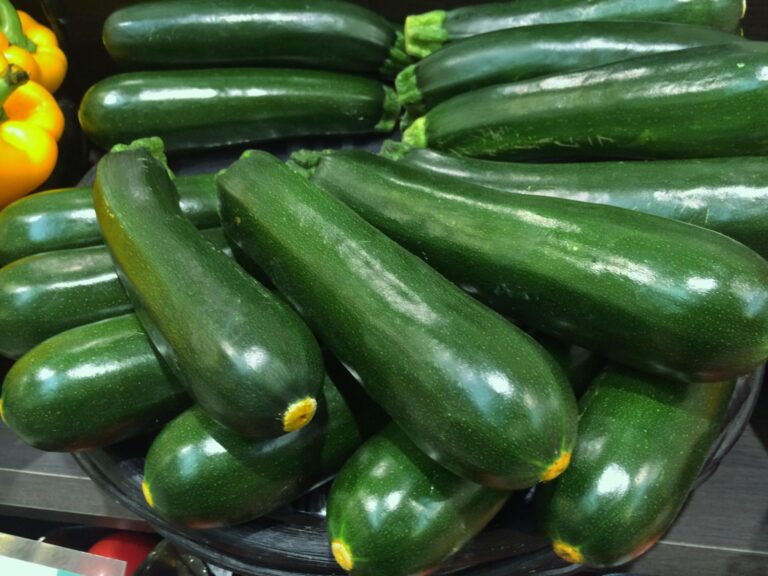
Harvesting Zucchini
Harvesting can commence as soon as the fruits reach 3 inches long. You can wait longer, and let the fruits mature. However, picking them when they are young produces more tender fruit and more squash production in general.
Allowing them to get as big as possible may be a good idea for feeding livestock, but it will lower the total production of squash per plant.
I prefer to do both. I plant some Zucchini for the family and pick them young and tender while other plants are used only for livestock feed. Those plants produce squash upwards of 5 lbs. (2.2 kgs) that are 1-2 feet (30 to 60 cms) long throughout the season!
To harvest the squash from the plant, you can simply grab the squash and lightly twist the fruit from the plant.
You can also harvest the flowers instead of letting them set into a fruit. They are popular additions to salads and other dishes.
Seed Saving
Saving seeds from productive varieties is the best way to ensure success next growing season. While you are typically picking your squash when they are small, you need an old, huge zucchini to have mature seeds that are good to save.
This can be done towards the end of the growing season. Simply leave a couple of squash growing and let them grow as big as possible. Their skin should get quite hard. This is a sign of full maturity.
Once you have a fully matured fruit, you can harvest the seeds. Cutting these squash open is a lot harder than the immature Zucchini that you eat, so take care to stay safe with your cutting tools.
Cut open the zucchini, and scoop out all the seeds. It’s normal to scoop out fruit remnants attached to the seeds.
To easily separate the seeds from the fruit, add the mass to a container, cover with water, and close the container. You are going to leave it to ferment for a couple of days.
Then, you are going to put this mixture into a larger container and add more water. The seeds that you want to save will be heavy and sink to the bottom while the useless seeds float to the top.
Pour the waste from the top and collect the heavy seeds from the bottom. Rinse them on a sieve until all fruit residue is gone and the seeds are clean. Then, lay them out to dry.
Once they are dry, they are ready to put into a paper envelope and store in a cool, dark place until they are ready to use the next growing season!
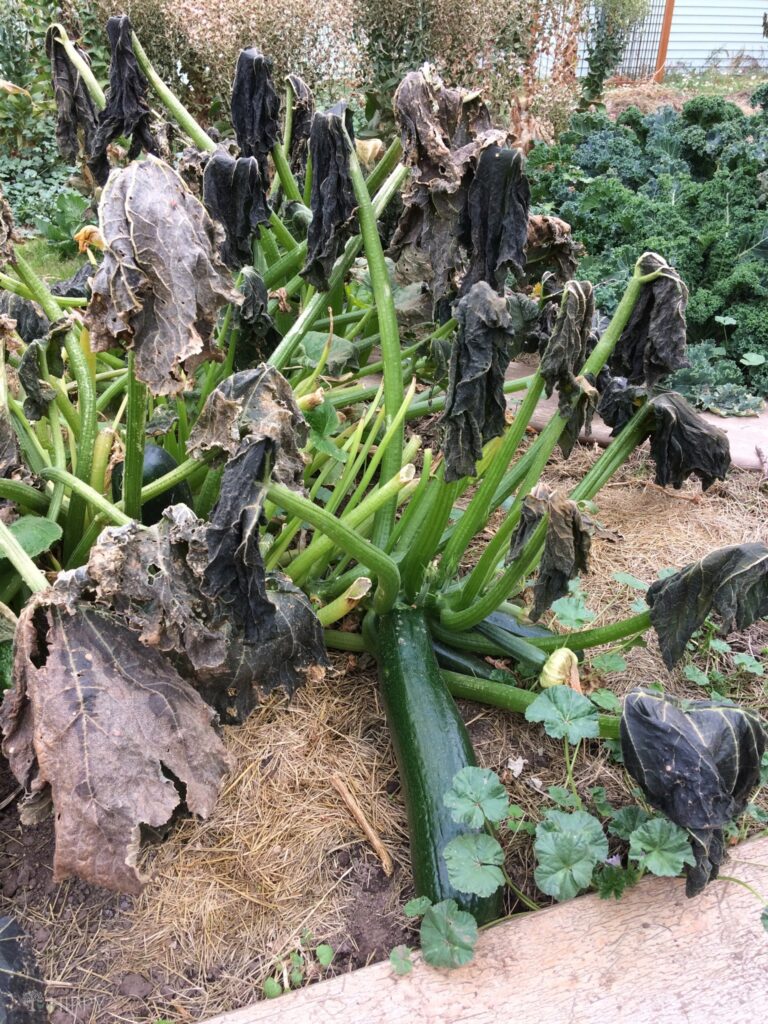
Zucchini Diseases
Watering at ground level and ensuring that you prune off any vegetation that may be diseased is the easiest way to keep your plants healthy. They are hardy plants, and don’t suffer from a disease very often when the plants are cared for properly.
As soon as a leaf shows signs of rot or mildew, cut it off and dispose of it. That vegetation should be kept out of the compost pile as well to ensure you don’t spread it to plants next season.
Doing this will stop the majority of Zucchini disease in its tracks. Here are some of the more common diseases:
- Powdery Mildew
- Leaf Blight
- Bacterial Leaf Spots & Bacterial Leaf Wilt
Keeping pests that spread disease away from the plants, and ensuring proper watering and pruning practices will beat these diseases. If the disease takes over, rip the plant out and dispose of it the same way you’d dispose of a pruned infected leaf.
Since zucchini sprouts so quickly and grows in any season without frost, you can start another seedling to replace diseased plants easily.
Zucchini Pests
Pests that can affect your plants include:
- Aphids
- Squash Bugs
- Leaf miners
- Squash Vine Borers
While it’s possible to treat pest infestations with pesticides, the more natural route is what homesteaders like me tend to prefer.
Crop rotation season after season will break the breeding cycle of these pests that overwinter.
Planting sacrificial plants that pests prefer at the ends of garden rows can be the decoy to take on the pets instead of ruining your crop yield.
Planting companion plants that attract beneficial insects like Ladybugs will help combat pest issues.
Proper watering and pruning will reduce the risk of pests as well. Also, don’t let weeds take over the garden, as they can serve as hosts for these pests.
If all else fails, pull the plants out and dispose of them just like a diseased plant. There is too much going on in the homestead to try and fight pests all the time, so sacrificing a couple of plants here and there is probably the best use of your time.
What To Do With Your Zucchini
If you find yourself with an abundance of zucchini, you may be wondering what the best way to preserve it is, or how to eat them…
You can eat them raw or cooked. They are great additions to salads, soups, and baked dishes.
They are also great fodder for livestock. I feed my chickens and pigs excess Zucchini every season.
Now, with canning plain zucchini not being recommended by the USDA, here are a few other preservation options.
Freezing Zucchini
Fortunately, zucchini freezes quite well, and it’s actually quite easy to do. The best way to freeze zucchini is to slice it into thin rounds or strips.
Spread the slices out on a baking sheet lined with parchment paper and freeze for about an hour. Once the slices are frozen solid, transfer them to a freezer-safe bag or container.
When you’re ready to use the frozen zucchini, there’s no need to thaw it first – just add it directly to your recipe.
Freeze Drying
Freeze drying is a process that can be used to preserve zucchini. In this process, the water content of the zucchini is reduced by up to 98%, leaving behind a lightweight, shelf-stable product.
Freeze-dried zucchini can be rehydrated by adding water and can be used in recipes in the same way as fresh or canned zucchini.
Fermenting
Fermented zucchini is especially delicious in salads or as a topping for tacos or burgers. The fermentation process allows the zucchini to maintain its crunch while also imparting a delicious tangy flavor.
Fermented zucchini is also rich in probiotics, which are beneficial for gut health.
Drying Zucchini and Other Summer Squashes
Dehydrating zucchini and other summer squashes is a quick and easy way to preserve them for later use. First, wash the squash and slice it into thin pieces.
Next, spread the slices out on a dehydrator tray and set the dehydrator to 115 degrees Fahrenheit.
Depending on the thickness of the slices, the squash will be dry in eight to 12 hours. Once dry, the squash can be stored in an airtight container for up to six months.
Dehydrated squash can be reconstituted by soaking it in water for 30 minutes or cooking it in soup or stew.
Make Zucchini Breads and Other Baked Goods
Zucchini bread is a classic summertime treat. moist and flavorful, it’s the perfect way to use up an abundance of zucchini. And while zucchini bread is delicious on its own, there are endless ways to mix things up.
Chocolate chips, nuts, and dried fruit all make great additions. Or, for a savory twist, try adding herbs or cheese to the batter. Zucchini can also be used in place of bananas in muffins or pancakes for a healthy way to start the day.
Last but not least, you can also pickle zucchini to extend its shelf life.
Final Words
These plants produce a lot of squash for a long time if they are treated properly. They are versatile and healthy, so find more ways to use them!
Planting, growing, and harvesting zucchini isn’t very hard. It’s one of the easier garden crops for beginning growers.
They produce a ton of fruit and can even help lower your feed costs for chickens and pigs. They are resistant to disease and pests if you water and prune them correctly. Simply put, the zucchini belongs in your garden, so go plant some!
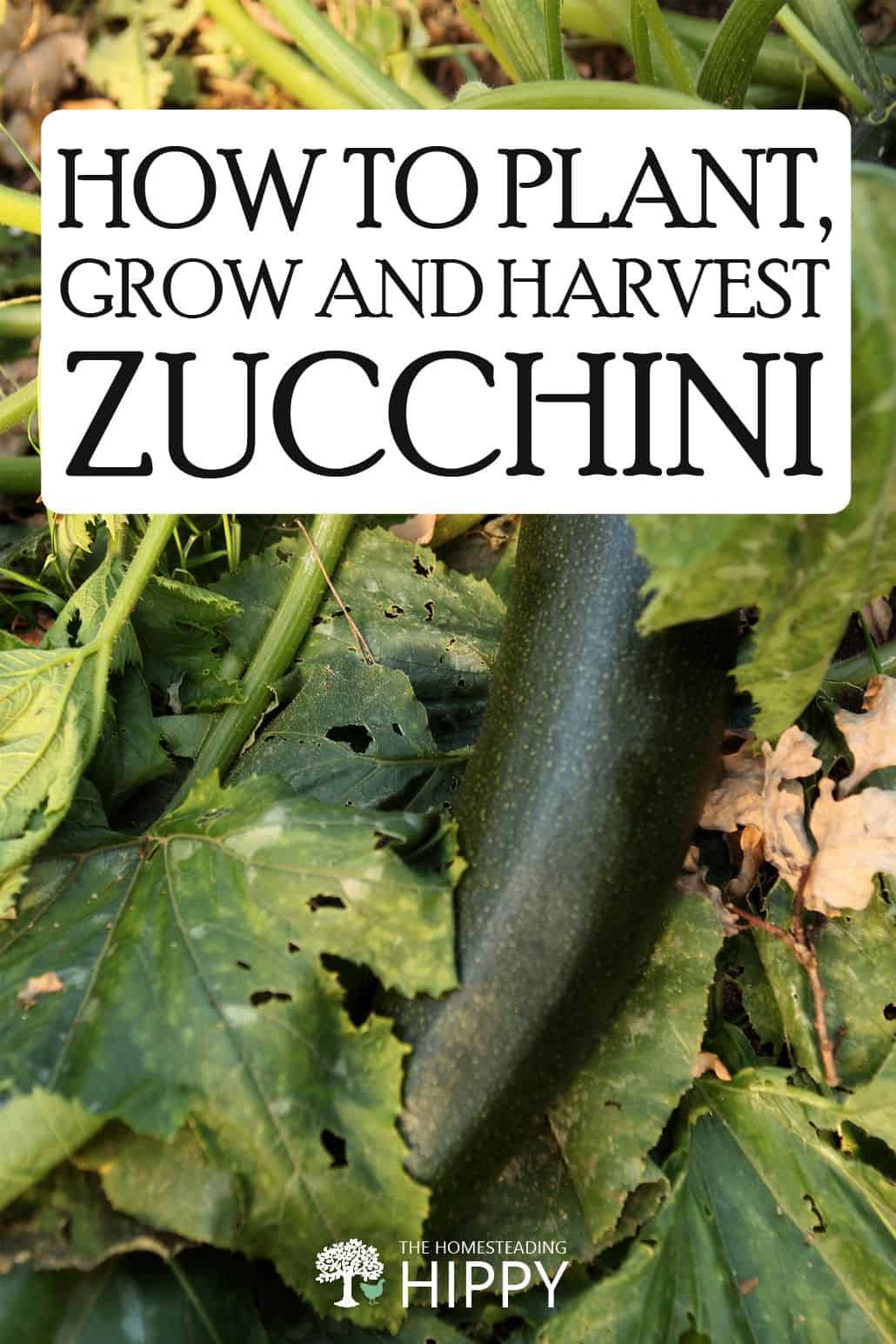

Milo Martinovich is a small-town guy who has been focused on a healthy lifestyle for the majority of his life. Through a career in Personal Training, he became engulfed in the world of healthy nutrition, which led him to grow and raise his food, and finally, to full-fledged homesteading! Find out more bout our team members.

Hi this is very helpful thank you Milo 🙂
Thank you for being so generous with your time and knowledge. I’m ‘late to the party’ of gardening but really learning to love it.
This is my second year of trying raised bed gardening. I planted squash seeds this year and was surprised by one massive squash plant taking over the bed. Turns out there were a few zucchini seeds in the seed package too. Good thing I like them! I had no idea you could prune them. This is just what I needed to know. Thank you for this very helpful information.